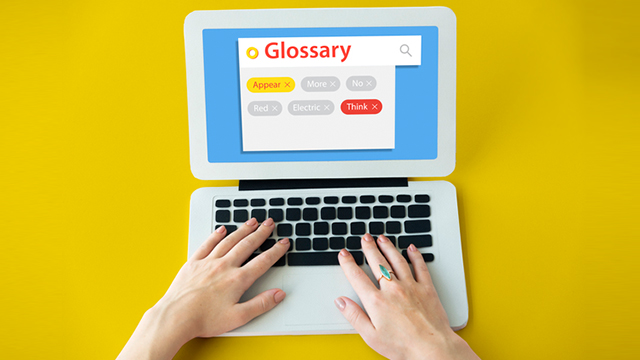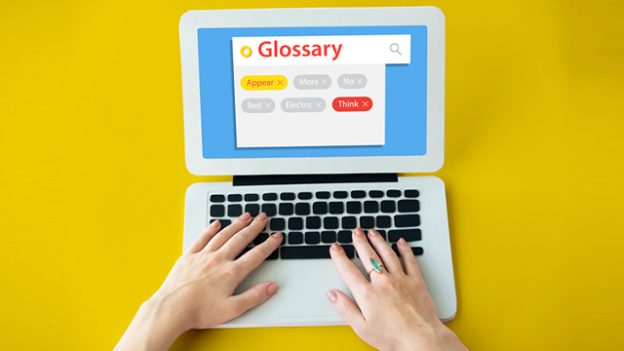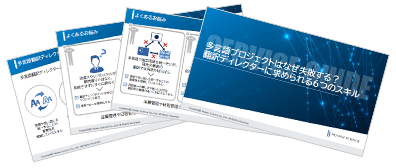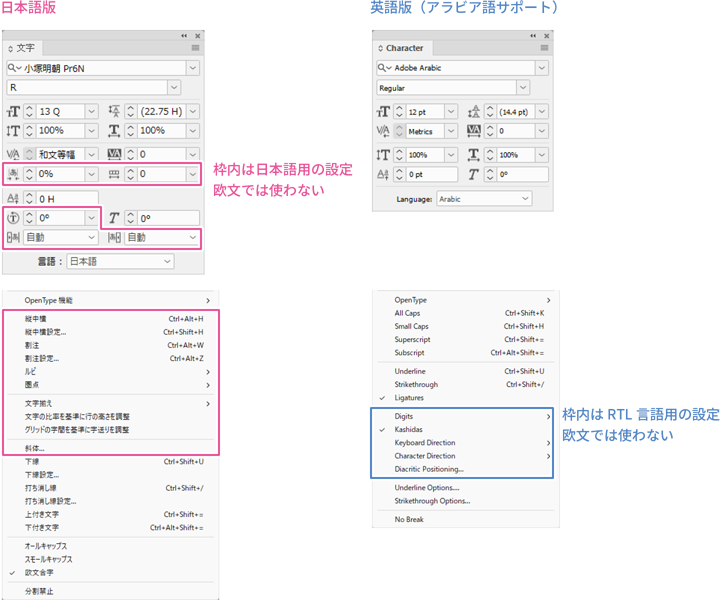
A translation glossary is a great tool to promote consistency in a translated work. In its simplest form, a translation glossary is just a list of important terms in the source language and their respective translations in the target language. Such lists are often prepared by the company or department that is requesting a translation order, in accordance with existing translated materials when possible.
But what terminology should be included in a translation glossary? If the glossary is too sparse, recurring terms may be inconsistently translated throughout the final document. But if the glossary is too long and restrictive, this can also cause problems for the translator. The following are guidelines regarding what terms are most necessary in a translation glossary and what terms should not be included.
Terms to Include
1. Proper Nouns
Proper nouns are nouns that designate a specific person, place, or object, and they are often capitalized in English. This includes things like the names of people and companies, places, as well as products and services. And while many such nouns can be researched online, the best way to ensure that the translator uses the correct spelling and notation of proper nouns is to add them to the glossary, especially in cases where the source and target use different alphabets or writing systems.
2. UI and Printed Labels
When documentation is being translated as a companion to software, online services, or another product that contains a user interface (UI), the translations used in the documentation must match the actual product to avoid confusion and misoperation. Therefore, such terminology should be added to the translation glossary.
The same is true for any text that will appear as labels on a physical object. You should add button and switch names, port names, warning labels, and so on to the glossary to ensure consistency with the actual object.
3. Industry Terms
If the source contains terminology specific to the industry for which the text is being prepared, defining the proper translations of industry terms in the translation glossary helps to ensure the accuracy of the results. This clarification is especially useful when words are highly specialized or otherwise unlikely to appear in multilingual dictionaries—such as abbreviations—or when the words can have a different translation in other contexts.
As an example of the latter, the word “ルート” (ru-to) in Japanese can be translated as either “root” or “route” depending on the context. For a document dealing with computers and folder hierarchies, defining “ルート” as “root” in the glossary helps avoid confusion and mistranslation.
Terms to Exclude
1. General Language
While consistent language is important to a translation, especially in fields such as legal and technical translation, an overly-restrictive glossary can also be a problem. Limiting the vocabulary that is permissible for more general terms can actually backfire and lead to translations that are unnatural or difficult to read. It can also create more work for quality assurance (QA) checkers, who must make judgements on whether a translation should be changed to match the glossary, even when the translation is otherwise accurate and grammatically sound.
This recommendation is especially true for words that have a verb form or are otherwise likely to be conjugated. When a common word with conjugations is added to the translation glossary, strict adherence to the glossary may be impossible in context. And if automatic checking tools are used, unregistered conjugation forms will appear as false errors.
For example, the Japanese term 設定 (settei) as a noun can be translated in ways such as “setting” or “configuration”. Because of this, unifying the terminology by adding one of these variations to the glossary may seem beneficial. However, this word often appears in the context of a verb as “to set” or “to configure”. If the glossary contains a noun version of the term as the registered translation, every verb instance within the document will become inconsistent with the designated term, and vice-versa, so leaving it out of the glossary is better.
If necessary, consider adding such restrictions to the style guide instead.
2. Word Fragments
Ideographic languages such as Chinese and Japanese form words by using combinations of symbols that represent ideas rather than phonetic sounds. A word can be represented by a single symbol or by a combination of multiple symbols, and in many cases, the same symbol can contribute to a variety of different words. For this reason, adding a one-character word to the glossary can reduce the effectiveness of the glossary, as it creates false positive results when larger words happen to contain the same symbol. For example, if the Japanese word 分 (fun) is added the glossary with the translation “minute,” every instance of common words like 分析 (bunseki, analysis), 分量 (bunryou, quantity), and 十分 (juubun, adequate) in the source text will also be flagged as matching terms.
For an English-language equivalent, consider the repercussions of adding a prefix such as “pre” into the glossary. Depending on the settings of the automated QA tools being used, this could create false positives from a variety of words that coincidentally start with those letters, such as “present” and “pressure.”
3. Repetitions
When multiple terminology lists are compiled into a glossary, there is chance that the same term may appear multiple times. If every repetition is the same, the glossary list becomes unnecessarily long, and the operating time of checking tools can become long as well. On the other hand, if multiple translation variations are listed for the same source term, this nullifies the purpose of the translation glossary, as the glossary itself promotes discrepancy. And depending on the types of automatic checking tools being used, this variation in glossary translations can create false errors during QA checks.
If different translations of the same source term are necessary, for example if the same UI term has a different translation depending on where the word appears, add a description column to the glossary file to explain the proper context of each variation.
But what if a word recommended for exclusion is also a UI term? To build on an earlier example, “設定” (settei, setting), in addition to being a common Japanese word, is often found in software UI and online service menus. But if this term is registered to the glossary as-is, common instances of the term are likely to require different conjugations, and translations may become inconsistent with the glossary. Thankfully, in many languages, including Japanese and English, UI terms and other labels are often set apart from the surrounding text via brackets, quotation marks, or other indicators. When possible, registering UI terms to the translation glossary with those symbols included can remove confusion and prevent automatic translation tools from registering false errors when the terms appear casually.
Creating and then maintaining a translation glossary is important to ensuring consistency in a translated text and reducing the likelihood of mistranslations, not just within a single piece of writing, but across multiple documents with multiple translators. Practically every field of writing can benefit from such lists, and once made, translation glossaries can always be expanded or updated to address prior challenges and ensure that they are always relevant to the work being translated.


























